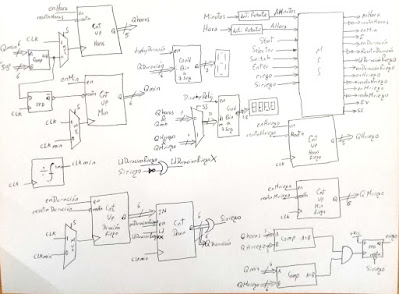▷ Finding a Dynamical Model of a Social Norm Physical Activity Intervention
⭐⭐⭐⭐⭐Finding a Dynamical Model of a Social Norm Physical Activity Intervention from Victor Asanza Armijos
- ➡️ #ComputationalModeling #MathematicalModel #SystemIdentification #AtmosphericMeasurements #ParticleMeasurements #LeggedLocomotion #DataModels #SocialCognitiveTheory #SCT #Matlab #ModernControlTheory
- ➡️ ETCM: IEEE Ecuador Technical Chapters Meeting (ETCM - 2017)
- ⭐ Read full paper: https://ieeexplore.ieee.org/abstract/document/8247450
- ✅ Read Proceedings: https://ieeexplore.ieee.org/xpl/conhome/8232983/proceeding
- ⭐ Source code repository: https://github.com/Matlab-Applications
- When using this resource, please cite the original publication:
- Abstract:
- Low levels of physical activity in sedentary individuals constitute a major concern in public health. Effective physical activity interventions can be designed relying on mobile technologies, such that interactions can occur in opportune moments. The purpose of this work is to find a dynamical model of a social norm physical activity intervention relying on Social Cognitive Theory, and using an experimental data set. The model will serve as a framework for the design of future optimized interventions. To obtain model parameters, two strategies are developed: first, an algorithm that randomly varies the values of each model parameter around initial guesses. The second approach utilizes traditional system identification concepts to obtain model parameters relying on semi-physical identification routines. For both cases, the obtained model is assessed through the computation of percentage fits to a validation data set, and by a correlational analysis.
- ✅ Conference content:
- ✅ Published in: IEEE Second Ecuador Technical Chapters Meeting (ETCM)
- ✅ References:
- "World Health Organization. WHO Global Recommendations on Physical Activity for Health", Geneva: World Health Organization, 2010.
- "The global burden of disease: 2004 update", World Health Organization Geneva, 2008.
- CR Richardson, TL Newton, JJ Abraham, A Sen, M Jimbo and AM. Swartz, "A meta-analysis of pedometer-based walking interventions and weight loss", Ann Fam Med, vol. 6, pp. 69-77, 2008.
- C Pooley, M Tight, T Jones, D Horton, G Scheldeman, A Jopson et al., Understanding walking and cycling: summary of key findings and recommendations, 2012.
- JN Morris and AE. Hardman, "Walking to health", Sports Med., vol. 23, pp. 306-32, 1997.
- LB. Andersen, Physical activity and health. BMJ, BMJ Publishing Group Ltd, vol. 334, pp. 1173, 2007.
- G MacLellan, L Baillie and M Granat, "P Environments ACM. The application of a physical activity and location measurement system to public health interventions to promote physical activity", Proc 2nd Int Conf Pervsive Technol Relat to Assist, vol. 09, pp. 1-8, 2009.
- RR Pate, M Pratt, SN Blair, WL Haskell, CA Macera, C Bouchard et al., "Physical activity and public health", A recommendation from the Centers for Disease Control and Prevention and the American College of Sports Medicine. JAMA, vol. 273, pp. 402-7, 1995.
- AL Morgan, DA Tobar and L Snyder, "Walking toward a new me: the impact of prescribed walking 10000 steps/day on physical and psychological wellbeing", J Phys Act Health, vol. 7, pp. 299-307, 2010.
- MIND. Ecotherapy: The Green Agenda for Mental Health, 2007, [online] Available: http://www.mind.org.uk/campaigns_and_issues/report_and_resources/835ecotherapy.
- Harries Tim, Eslambolchilar Parisa, Rettie Ruth, Stride Chris, Walton Simon and C. Hugo van Woerden, "Effectiveness of a smartphone app in increasing physical activity amongst male adults: a randomised controlled trial", BMC Public HealthBMC series - open inclusive and trusted, 2016.
- E. B. Hekler, P. Klasnja, V. Traver and M. Hendriks, "Realizing effective behavioral management of health: The metamorphosis of behavioral science methods", IEEE Pulse, vol. 4, no. 5, pp. 29-34, 2013.
- W. T. Riley, D. E. Rivera, A. A. Autienza, W. Nilsen, S. Allison and R. Mermelstein, "Health behavior models in the age of mobile interventions: are our theories up to the task?", Translational Behavioral Medicine: Practice Policy Research, vol. 1, no. 1, pp. 53-71, 2011.
- L. M. Collins, "Unpacking the black box: engineering more potent behavioral interventions to improve public health", Evan G. and Helen G. Pattishall Outstanding Research Achievement Award. Penn State University State College PA, 2012.
- D. E. Rivera, M. D. Pew and L. M. Collins, "Using engineering control principles to inform the design of adaptive interventions: a conceptual introduction", Drug and alcohol dependence, vol. 88, no. 2, pp. S31-S40, 2007.
- J. E. Navarro-Barrientos, D. E. Rivera and L. M. Collins, "A dynamical model for describing behavioural interventions for weight loss and body composition change", Mathematical and Computer Modelling of Dynamical Systems, vol. 17, no. 2, pp. 183-203, 2011.
- Y. Dong, D. E. Rivera, D. M. Thomas, J. E. Navarro-Barrientos, D. S. Downs, J. S. Savage, et al., "A dynamical systems model for improving gestational weight gain behavioral interventions", American Control Conference (ACC), pp. 4059-4064, 2012.
- L. M. Lopez, E. E. Tolley, D. A. Grimes and M. Chen-Mok, "Theory based interventions for contraception", The Cochrane database of systematic reviews, vol. 3, pp. CD007249, 2011.
- T. Harries, P. Eslambolchilar, R. Rettie, C. Stride, S. Walton and H. C. van Woerden, "Effectiveness of a smartphone app in increasing physical activity amongst male adults: a randomised controlled trial", BMC public health, vol. 16, no. 1, pp. 925, 2016.
- T Harries, P Eslambolchilar, C Stride, R Rettie and S. Walton, "Walking in the wild-Using an always-on smartphone application to increase physical activity" in Human computer interaction - INTERACT 2013 SE-2, Heidelberg:Springer Berlin, pp. 19-36, 2013.
- C. A. Martín et al., "A dynamical systems model of Social Cognitive Theory", 2014 American Control Conference, pp. 2407-2412, 2014.
- A. Bandura, "Human agency in social cognitive theory", The American psychologist, vol. 44, no. 9, pp. 1175-1184, 1989.
- L. Ljung, System Identification: Theory for the User, Upper Saddle River, NJ:Prentice Hall PTR, 1999.
- L. Ljung, System Identification Toolbox for use with MATLAB. Chicago, 1995.
Leer temas relacionados:




















